Abstract
Tazobactam (YTR-830H), a novel beta-lactamase inhibitor, was compared with clavulanic acid and sulbactam for enhancement of the activity of piperacillin against beta-lactamase-producing, piperacillin-resistant clinical isolates. Piperacillin MICs were determined in media containing a fixed concentration of 2 or 4 micrograms of the inhibitors per ml. The higher concentration was generally more effective. Tazobactam was superior to sulbactam in enhancing the spectrum and potency of piperacillin. Although the calvulanic acid combination was more potent, tazobactam was effective for a similar spectrum of resistant gram-negative clinical isolates containing beta-lactamase. MICs were reduced to the susceptible range for Escherichia coli, Klebsiella pneumoniae, Proteus spp., Salmonella spp., and Shigella spp. Combinations with tazobactam and sulbactam, but not clavulanic acid, were effective against Morganella spp. Some antagonism of the activity of piperacillin was observed with clavulanic acid but not with tazobactam or sulbactam. The inhibitors were similarly effective with piperacillin against beta-lactamase-positive Staphylococcus spp. and the Bacteroides fragilis group. Piperacillin-tazobactam was more effective against a broader spectrum of gram-negative enteric bacteria than ticarcillin plus clavulanic acid was. Combinations with tazobactam or clavulanic acid had a broader spectrum of activity than combinations with sulbactam against bacteria that produce characterized plasmid-mediated enzymes of clinical significance. In particular, piperacillin with tazobactam or clavulanic acid, but not with sulbactam, inhibited TEM-1, TEM-2, and SHV-1 enzymes. In vitro activity was reflected in vivo. Tazobactam and clavulanic acid were superior to sulbactam in enhancing the therapeutic efficacy of piperacillin in mice infected with beta-lactamase-positive E. coli, K. pneumoniae, Proteus mirabilis, and Staphylococcus aureus. Only combinations with tazobactam and sulbactam were effective against the Morganella infection. Tazobactam has a good potential for enhancing the clinical efficacy of piperacillin.
Full text
PDF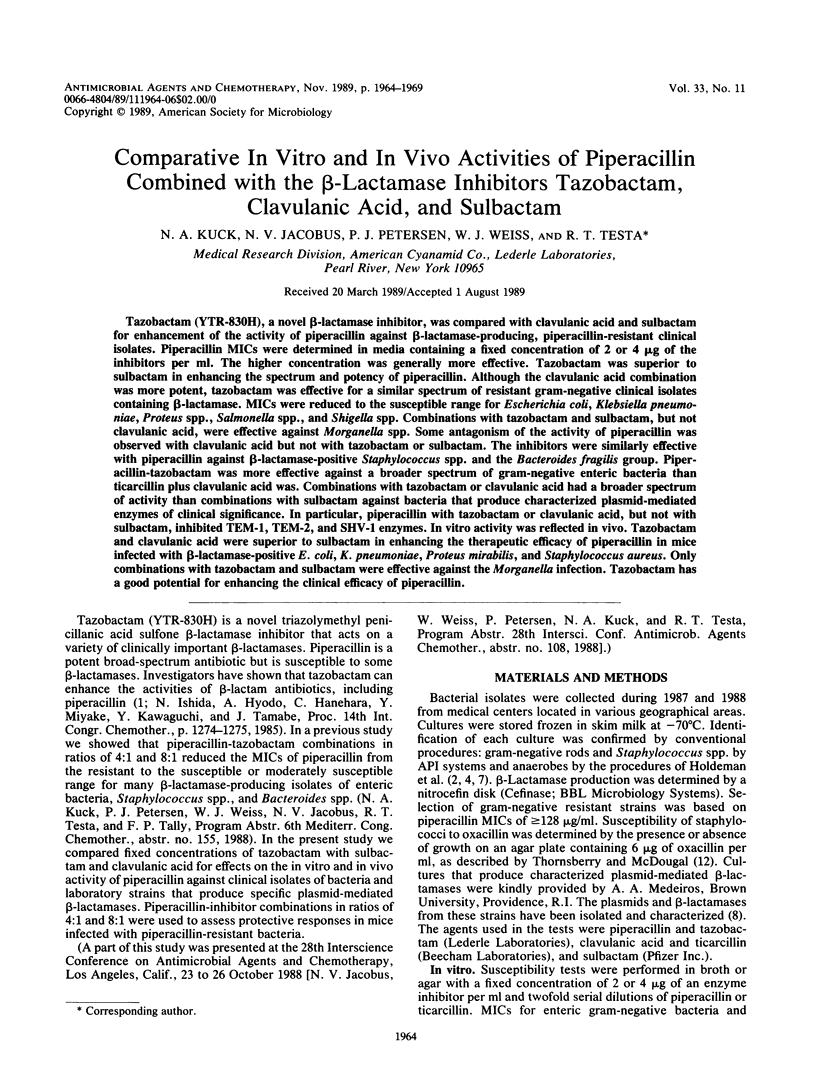
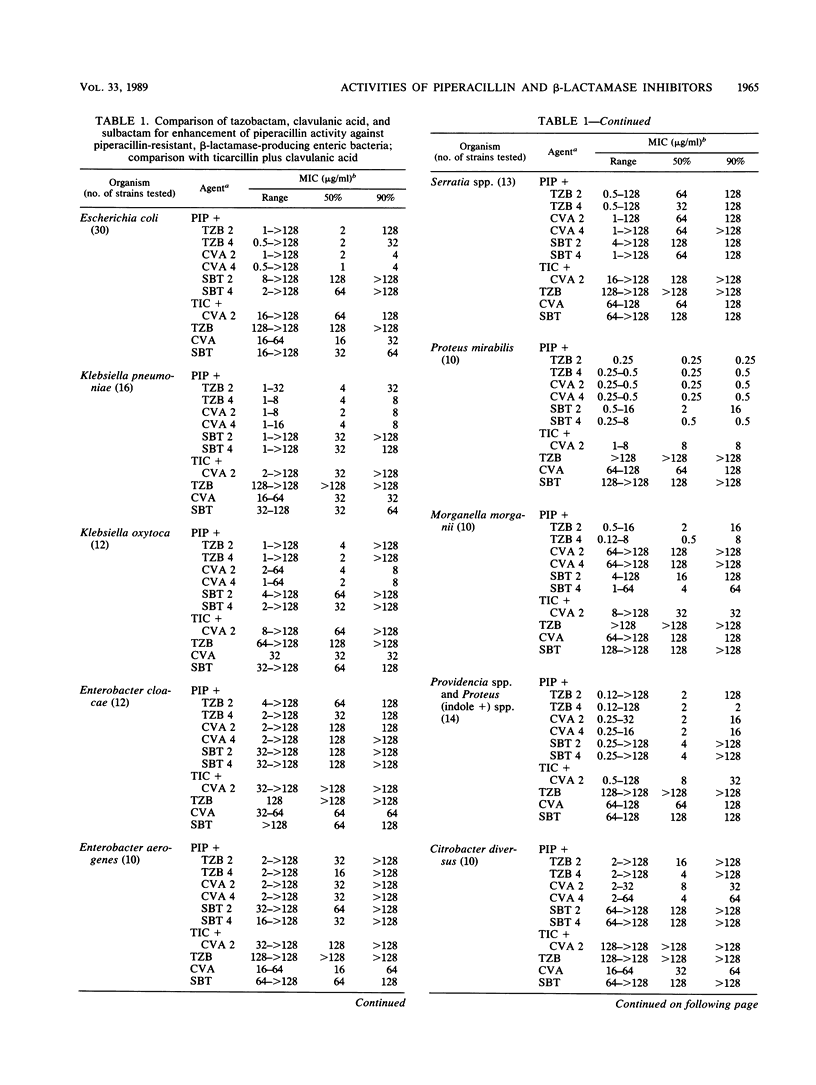
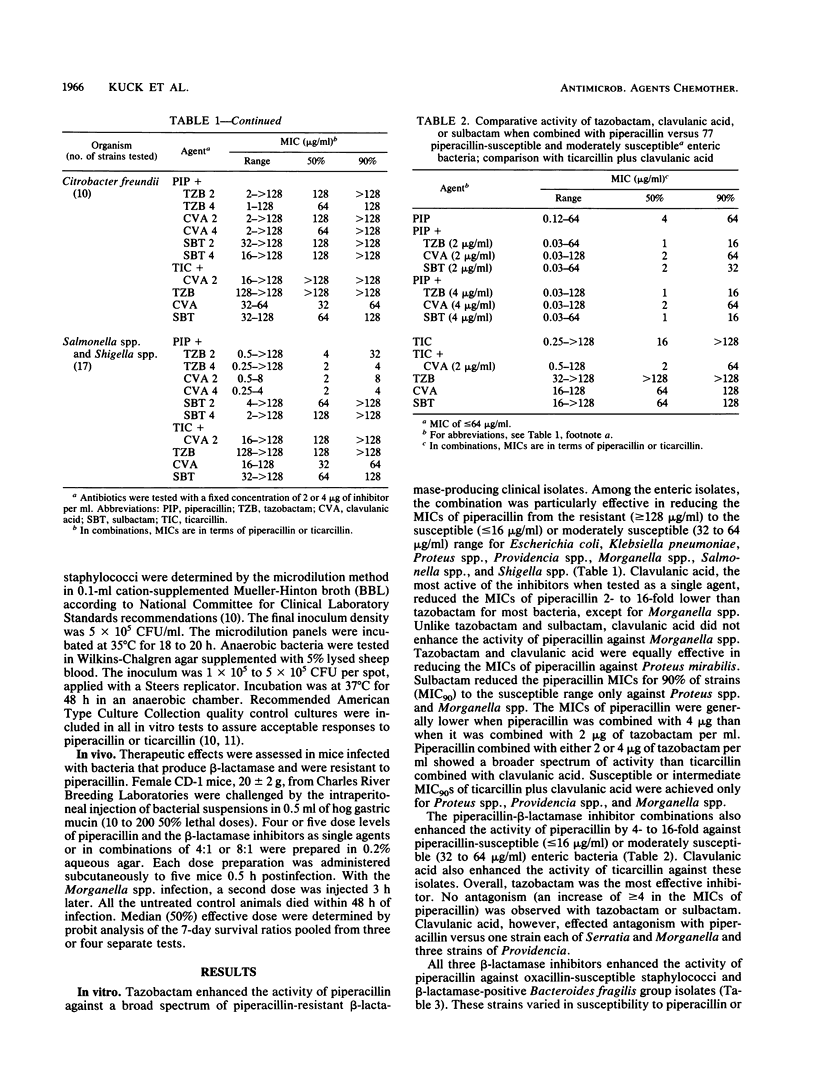
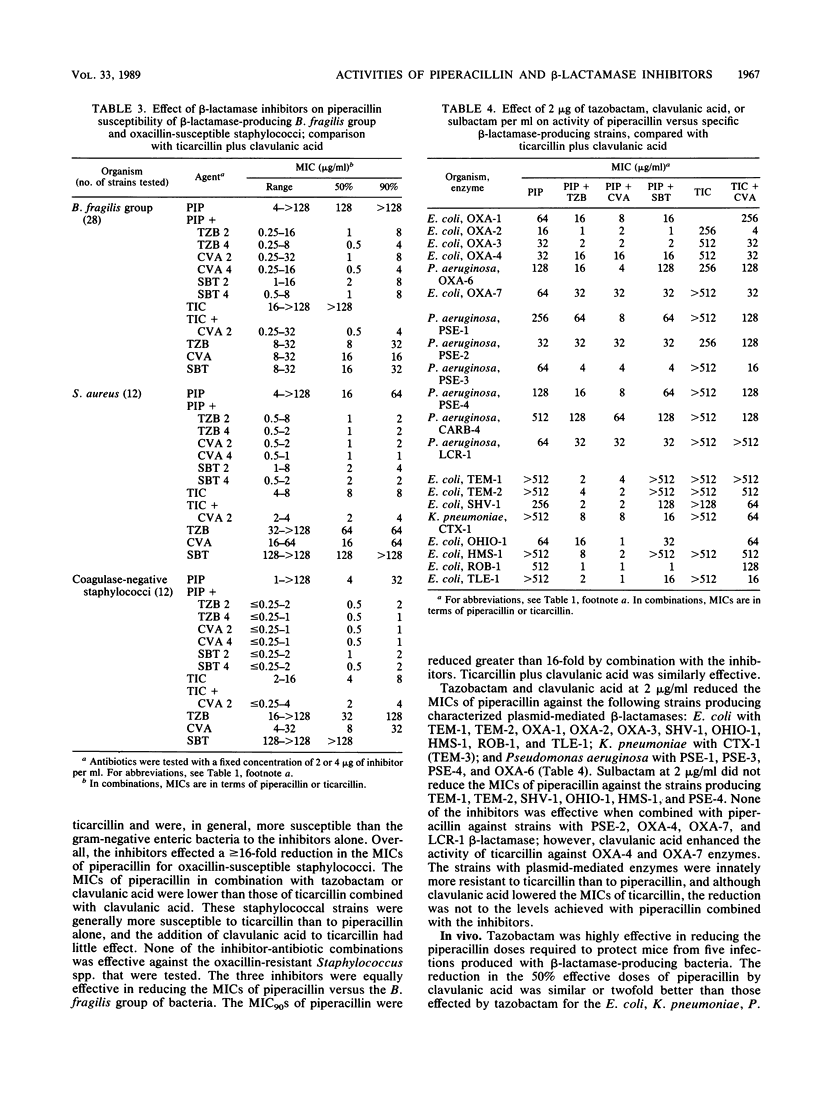
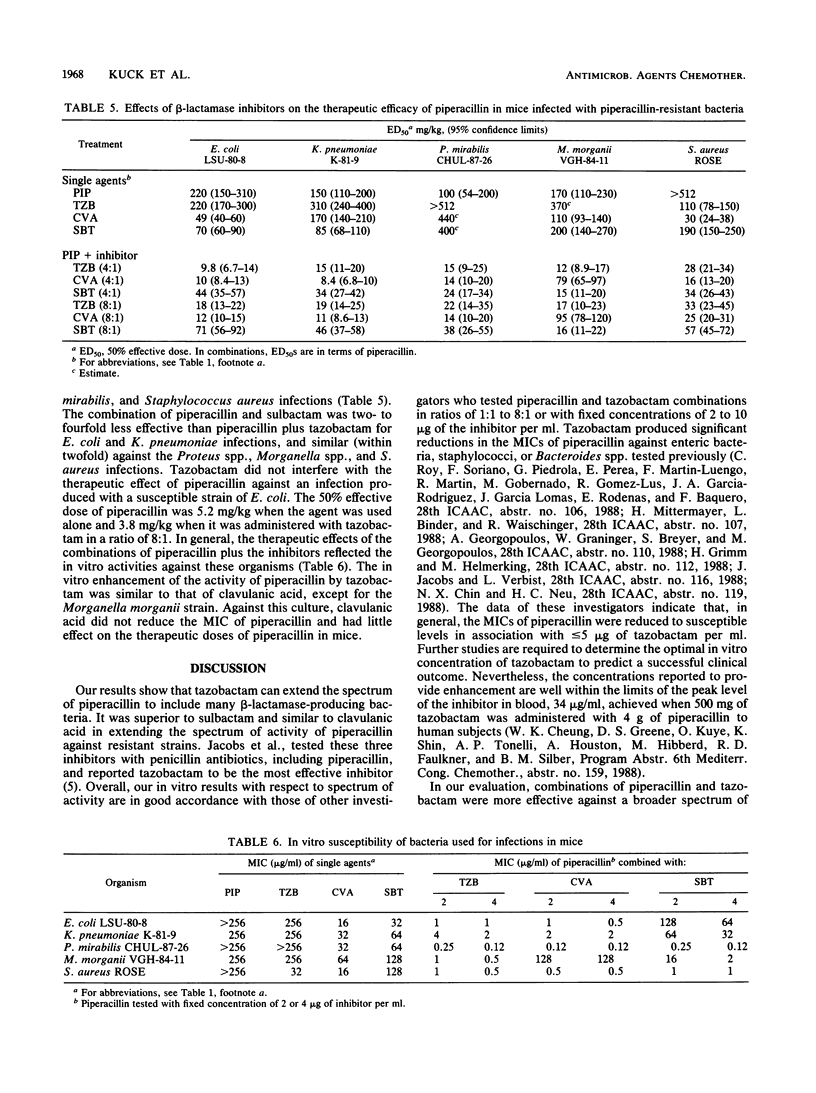
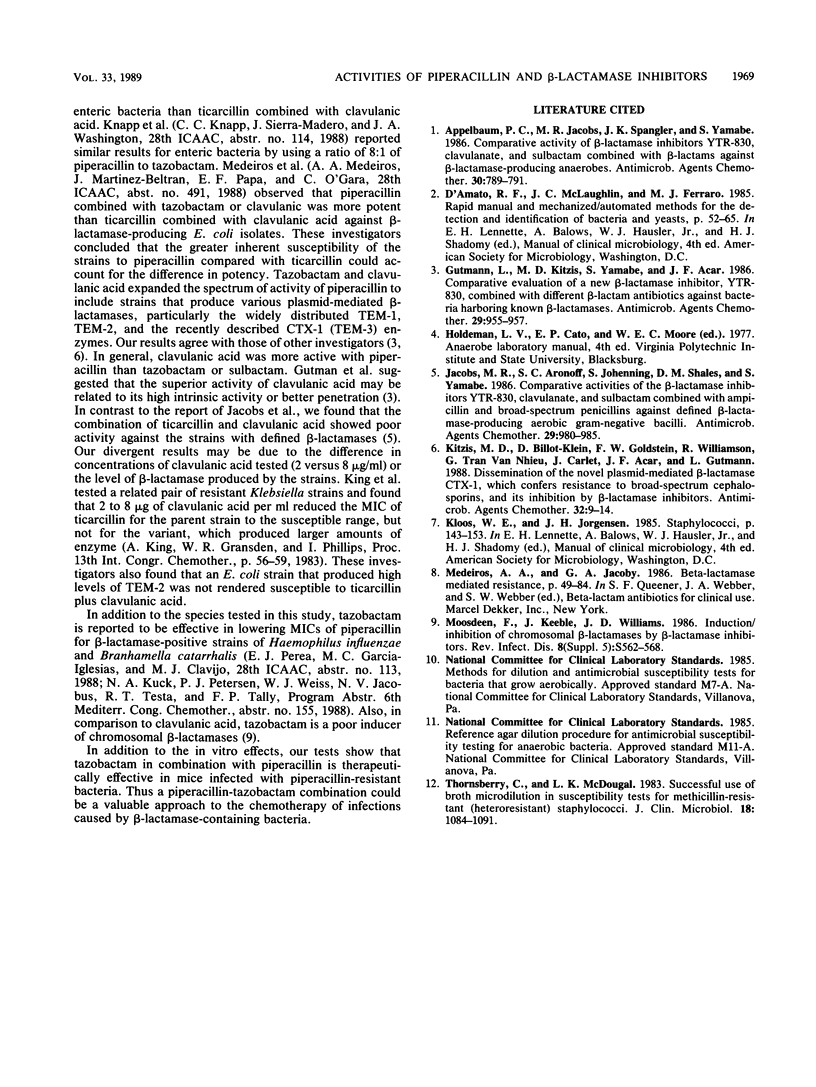
Selected References
These references are in PubMed. This may not be the complete list of references from this article.
- Appelbaum P. C., Jacobs M. R., Spangler S. K., Yamabe S. Comparative activity of beta-lactamase inhibitors YTR 830, clavulanate, and sulbactam combined with beta-lactams against beta-lactamase-producing anaerobes. Antimicrob Agents Chemother. 1986 Nov;30(5):789–791. doi: 10.1128/aac.30.5.789. [DOI] [PMC free article] [PubMed] [Google Scholar]
- Gutmann L., Kitzis M. D., Yamabe S., Acar J. F. Comparative evaluation of a new beta-lactamase inhibitor, YTR 830, combined with different beta-lactam antibiotics against bacteria harboring known beta-lactamases. Antimicrob Agents Chemother. 1986 May;29(5):955–957. doi: 10.1128/aac.29.5.955. [DOI] [PMC free article] [PubMed] [Google Scholar]
- Jacobs M. R., Aronoff S. C., Johenning S., Shlaes D. M., Yamabe S. Comparative activities of the beta-lactamase inhibitors YTR 830, clavulanate, and sulbactam combined with ampicillin and broad-spectrum penicillins against defined beta-lactamase-producing aerobic gram-negative bacilli. Antimicrob Agents Chemother. 1986 Jun;29(6):980–985. doi: 10.1128/aac.29.6.980. [DOI] [PMC free article] [PubMed] [Google Scholar]
- Kitzis M. D., Billot-Klein D., Goldstein F. W., Williamson R., Tran Van Nhieu G., Carlet J., Acar J. F., Gutmann L. Dissemination of the novel plasmid-mediated beta-lactamase CTX-1, which confers resistance to broad-spectrum cephalosporins, and its inhibition by beta-lactamase inhibitors. Antimicrob Agents Chemother. 1988 Jan;32(1):9–14. doi: 10.1128/aac.32.1.9. [DOI] [PMC free article] [PubMed] [Google Scholar]
- Moosdeen F., Keeble J., Williams J. D. Induction/inhibition of chromosomal beta-lactamases by beta-lactamase inhibitors. Rev Infect Dis. 1986 Nov-Dec;8 (Suppl 5):S562–S568. doi: 10.1093/clinids/8.supplement_5.s562. [DOI] [PubMed] [Google Scholar]
- Thornsberry C., McDougal L. K. Successful use of broth microdilution in susceptibility tests for methicillin-resistant (heteroresistant) staphylococci. J Clin Microbiol. 1983 Nov;18(5):1084–1091. doi: 10.1128/jcm.18.5.1084-1091.1983. [DOI] [PMC free article] [PubMed] [Google Scholar]


